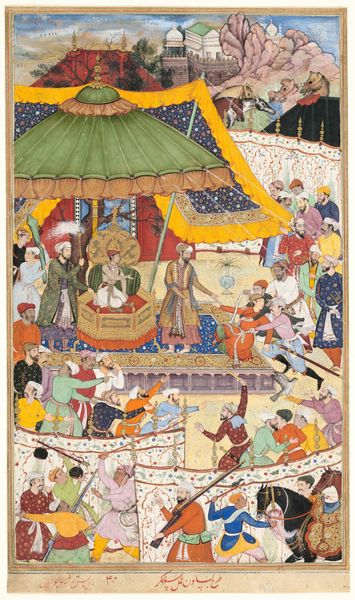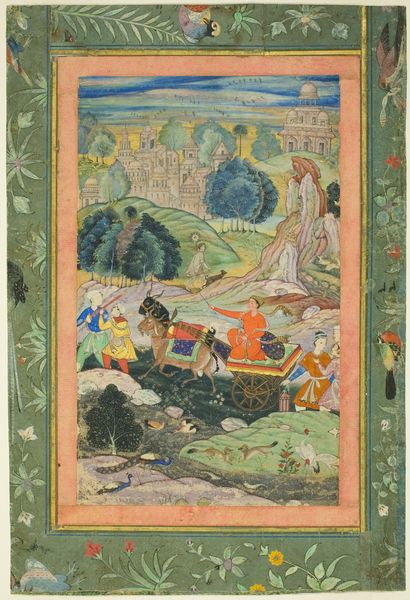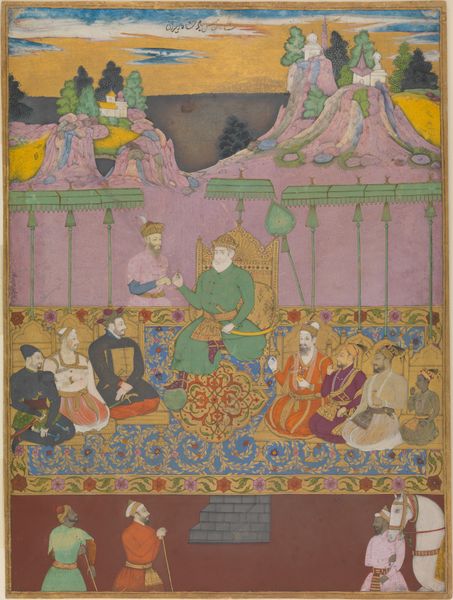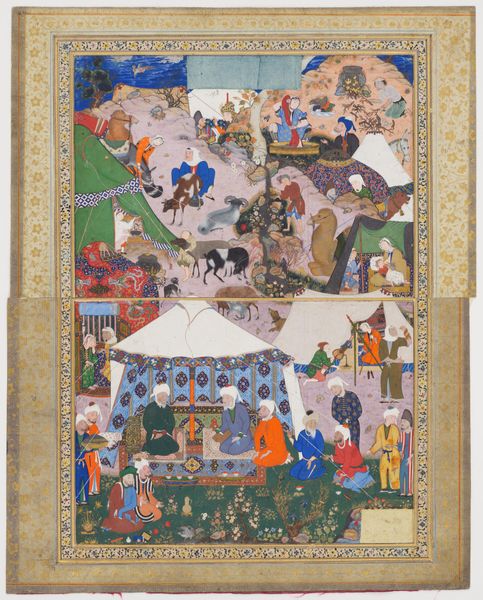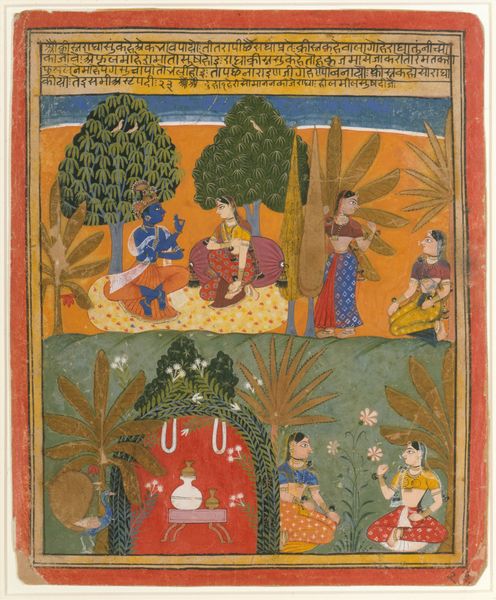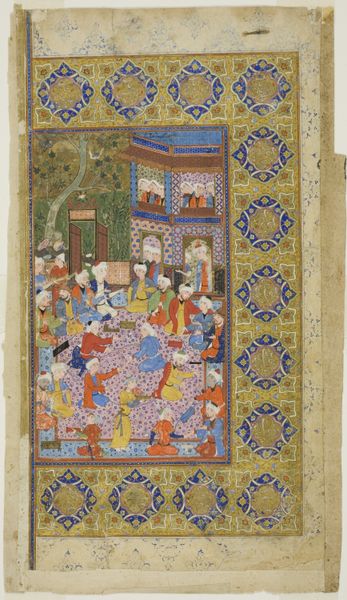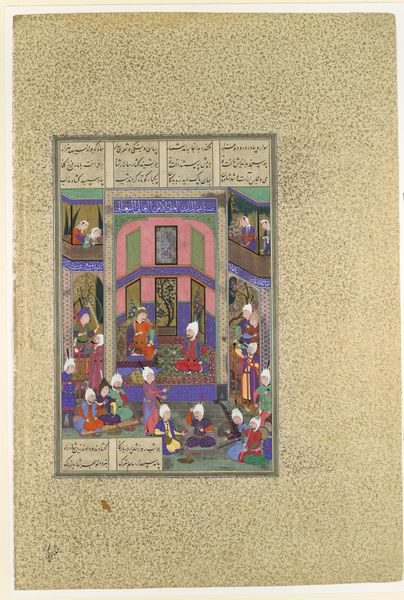
Mahiya frees Zambur, Beheads his sleeping guards, and suspends Gharrad in his stead (painting, verso); Nine Lines of Nastaâliq Script (text, recto), illustrated folio from a manuscript of the Hamzanama c. 1570
0:00
0:00
Dimensions: image: 67.5 x 51.5 cm (26 9/16 x 20 1/4 in.)
Copyright: CC0 1.0
Curator: This vividly colored folio, attributed to Mir Sayyid ‘Ali, illustrates a scene from the Hamzanama. It’s entitled, “Mahiya frees Zambur, Beheads his sleeping guards, and suspends Gharrad in his stead.” Editor: My first impression is that it’s incredibly violent, yet rendered with meticulous detail. What does the materiality say about the story it's telling? Curator: The Hamzanama was commissioned by Emperor Akbar, and these large-scale paintings were a product of a vast workshop of artists and artisans. The use of vibrant pigments, likely derived from both local and imported sources, speaks to the empire's wealth and artistic ambition. Editor: Absolutely. And look at the power dynamics on display! The act of Mahiya freeing Zambur becomes a potent symbol of liberation and resistance against tyranny, particularly when viewed through a postcolonial lens. Curator: Yes, and the composition itself highlights the labor involved. We see not just the heroic act, but also the consequences – the sleeping guards, the suspended Gharrad. It’s about process and outcome, labor and power. Editor: This piece compels us to consider the human cost, but also the potential for agency and change, even within seemingly rigid social structures. It's quite provocative. Curator: Indeed, a fascinating intersection of artistic production, imperial power, and acts of defiance. Editor: A perfect blend of materiality, violence, and liberation that resonates even today.
Comments
No comments
Be the first to comment and join the conversation on the ultimate creative platform.

